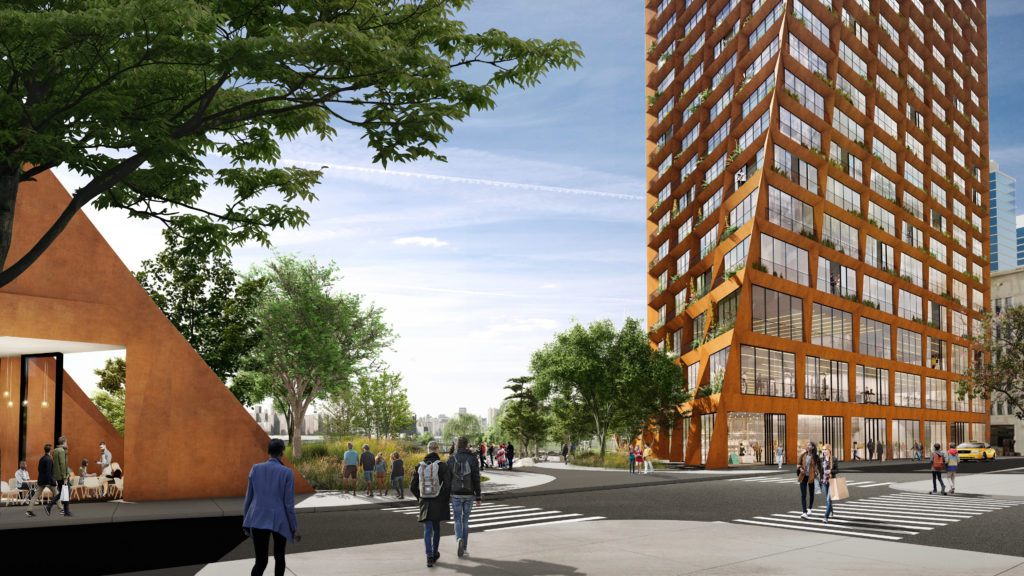Transformative development on the Williamsburg waterfront: Snapshot of the approval process

Here’s Two Trees Management’s proposed River Street development. Rendering by James Corner Field Operations and BIG-Bjarke Ingels Group courtesy of Two Trees Management
Two Trees Management’s plan to build slender high-rise apartment towers and a park with a beach and breakwaters on Williamsburg’s East River shoreline drew both support and opposition at a Community Board 1 meeting on Wednesday night.
The Walentas family’s company is seeking to rezone the River Street site, which it bought from Con Edison for $150 million, in order to construct two towers.
Those in favor of the plan expressed their excitement about what would be a wholly new type of waterfront access for the city, while those against the plan mostly cited concerns about displacement and affordability.
